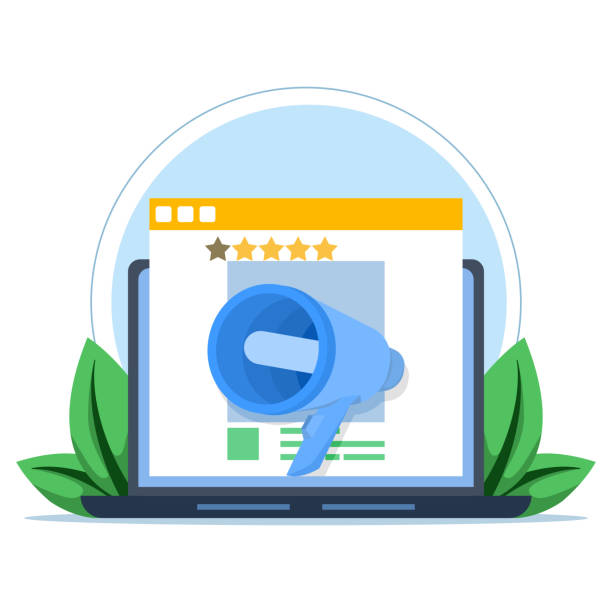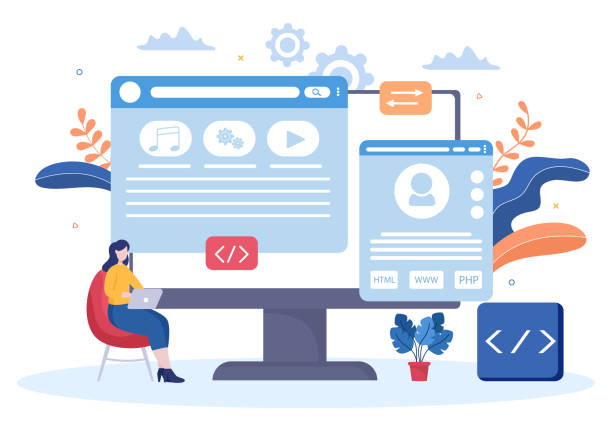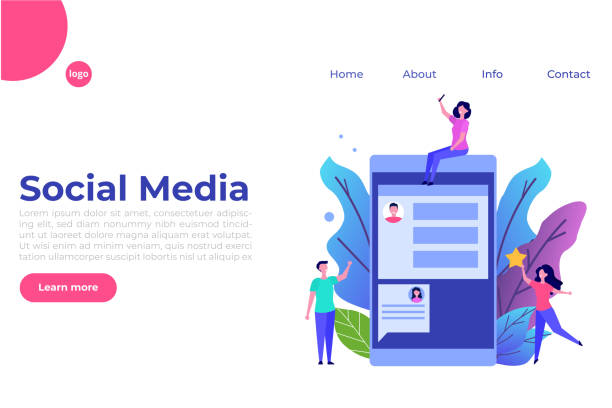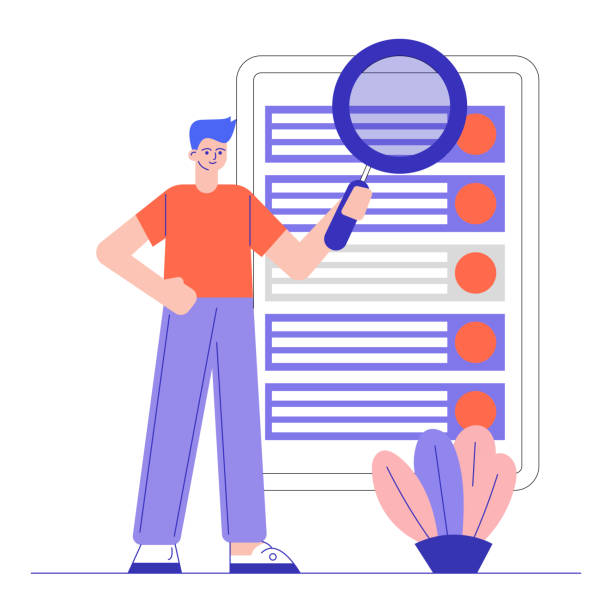The Ever-Increasing Importance of Secure Website Design

In the current era, where digitalization has encompassed all aspects of our lives, the importance of #secure_website_design and #data_protection for users is more evident than ever before.
Every day we witness an increase in cyberattacks, data theft, and privacy breaches, which can have irreparable consequences for businesses and individuals.
Loss of user trust, damage to brand reputation, and even heavy financial penalties are just some of the results of neglecting security in web development.
Therefore, a deep understanding of the principles and techniques of secure website design is no longer an option but an unavoidable necessity.
Web developers and business owners must always stay one step ahead of threats and design systems that are resilient to cyberattacks.
This not only helps protect sensitive information but also provides a secure and reliable experience for users.
Have you ever wondered how securely your personal information is stored on websites?
Are you dissatisfied with the low sales of your online store?
Rasaweb is your solution for having a professional and high-selling online store.
✅ Significant increase in sales and revenue
✅ Easy and enjoyable shopping experience for customers
⚡ Get free consultation from Rasaweb now!
Basic Principles of Web Security for Secure Website Design

To achieve secure website design, adhering to the basic and fundamental principles of web security is crucial.
The first step in this path is to use the HTTPS protocol instead of HTTP.
HTTPS encrypts the communication between the user and the server, preventing the eavesdropping of sensitive information and gaining user trust.
The next step is proper password management; not only should users be encouraged to use complex passwords, but the system must also use strong hashing and salting for storing passwords.
Regular updates of all site components, from the Content Management System (CMS) to plugins and themes, are vital; because older versions often have known vulnerabilities that hackers exploit.
Web Application Firewalls (WAF) can also provide an additional layer of security and filter malicious traffic.
Additionally, implementing defensive mechanisms against common attacks such as SQL Injection and XSS in coding, is among the main pillars of a secure website design and stable.
Training the development team in secure coding best practices should also not be overlooked.
Common Vulnerabilities and Ways to Combat Them

In the path of secure website design, recognizing common vulnerabilities and methods to combat them is unavoidable.
The OWASP (Open Web Application Security Project) organization regularly publishes a list of the top 10 web vulnerabilities, which is an excellent guide for developers.
Among these vulnerabilities are injection attacks, which include SQL Injection, NoSQL Injection, and OS Command Injection; these attacks allow an attacker to inject malicious code into your application and manipulate or steal data.
The solution is precise input validation and the use of Prepared Statements.
Another vulnerability is Cross-Site Scripting (XSS), which allows an attacker to inject client-side scripts into web pages.
To prevent XSS, all user inputs must be sanitized (disinfected) before display.
Also, broken authentication issues such as insecure sessions or weak password recovery mechanisms can easily be exploited by attackers.
Implementing strong authentication mechanisms, using two-factor authentication (2FA), and proper session management are of high importance.
The table below shows some of these vulnerabilities and general methods to combat them.
| Vulnerability Name | Brief Description | Solution |
|---|---|---|
| SQL Injection | Injecting malicious SQL code into the database | Input Validation, Prepared Statements |
| Cross-Site Scripting (XSS) | Injecting malicious scripts into users’ browsers | Sanitizing Inputs, Content Security Policy |
| Broken Authentication | Weaknesses in authentication mechanisms and session management | Using 2FA, Secure Session Management, Strong Password Hashing |
| Insecure Deserialization | Security issues arising from object-oriented data recovery | Security Monitoring, Data Validation |
The Role of SSL/TLS Certificates in Secure Website Design

One of the most important and fundamental components of secure website design is the proper implementation and use of SSL/TLS certificates.
SSL (Secure Sockets Layer) and its successor TLS (Transport Layer Security) are protocols that encrypt communication between a web browser and a web server.
This encryption ensures that data exchanged between the user and the site, such as login information, credit card details, or contact forms, remains private and untampered.
The presence of an SSL/TLS certificate not only helps maintain user privacy and security but also plays a vital role in building user trust in your website.
Browsers mark websites that do not use HTTPS as “insecure”, which can significantly negatively impact user experience and search engine ranking.
There are various types of SSL/TLS certificates, including Domain Validation (DV), Organization Validation (OV) and Extended Validation (EV), each offering different levels of authentication and trust.
Choosing the appropriate certificate type depends on the type of business and the volume of sensitive information exchanged.
Keeping the certificate up-to-date and ensuring its correct configuration are inseparable principles of a secure website design.
In fact, without SSL/TLS, any claim of site security is merely an illusion.
Tired of your company website not being seen as it deserves, losing potential customers? Solve this problem forever with professional and effective website design by Rasaweb!
✅ Increase brand credibility and gain customer trust
✅ Attract targeted sales leads
⚡ Contact us now for a free consultation!
Database Management and User Information Security

At the heart of every dynamic website lies a database that stores critical user information and site content.
Therefore, database security is one of the main pillars of secure website design.
To protect this treasure trove of information, the first and most important step is to use encryption methods for storing sensitive data.
Personal information, passwords (which should be stored as hashed and salted), and payment details, should never be kept as plain text in the database.
In addition to encryption, separation of duties and applying the least possible privilege for users and applications connecting to the database, are essential.
This means that each user or service should only have access to the information and operations necessary to perform their duties.
Regular and secure backups of the database and storing them in a separate and secure location, are vital preventive measures against data loss due to attacks or system failures.
Also, continuous monitoring of database activities to identify any suspicious activity or intrusion attempts, can help accelerate reaction to threats.
Do not forget that a single data breach from the database can destroy all your efforts in secure website design and tarnish your reputation.
Continuous Updates and Website Security Maintenance

A secure website is not a static website; rather, it is a living entity that requires continuous maintenance and updates.
Software updates, including server operating system, web server (such as Apache or Nginx), programming language (such as PHP or Python), database (such as MySQL or PostgreSQL) and especially the Content Management System (CMS) and all its plugins and themes, are an inseparable part of secure website design.
Software and CMS developers continuously discover new security vulnerabilities and release patches for them.
Failing to update in a timely manner means leaving the doors open for attackers who seek to exploit these known vulnerabilities.
Planning for regular updates, whether automatic or manual, is essential.
In addition to updates, continuous monitoring of server logs and security logs to identify suspicious patterns or intrusion attempts is also of high importance.
Using security monitoring tools that send automatic alerts upon detection of unusual activities, can significantly reduce reaction time to attacks.
Do not forget that even the best initial secure website design will quickly become vulnerable to new threats without continuous maintenance and updates.
This is an ongoing commitment, not a one-time task.
Penetration Testing Tools and Techniques for Secure Website Design

After implementing security mechanisms in secure website design, evaluating their effectiveness through Penetration Testing and vulnerability scanning is essential.
Penetration testing is a simulated controlled cyberattack conducted by security professionals (ethical hackers) to discover weaknesses in the system.
This process helps identify vulnerabilities that may have been overlooked during the design or implementation phases.
Automated vulnerability scanning tools can also regularly scan the site for known vulnerabilities, but these tools are not a substitute for manual penetration testing, which is capable of discovering more complex and logical flaws.
Using tools like OWASP ZAP or Burp Suite to analyze web traffic and discover vulnerabilities, is an inseparable part of the security quality assurance process.
Additionally, regular Security Audits by independent specialists, can provide an external and fresh perspective on the site’s security posture.
All these measures ensure that your secure website design is robust not only in theory but also in practice.
The table below displays some of these tools.
| Tool Name | Type | Primary Use |
|---|---|---|
| OWASP ZAP | Vulnerability Scanner, Penetration Testing Tool | Finding vulnerabilities in web applications |
| Burp Suite | Web Proxy, Penetration Testing Tool | Analyzing and manipulating HTTP/S traffic, vulnerability scanning |
| Nmap | Port Scanner and Network Discovery | Discovering hosts and services on the network, identifying system vulnerabilities |
| Sqlmap | Automated SQL Injection Penetration Testing Tool | Discovering and exploiting SQL Injection vulnerabilities |
Client-Side Security and Responsible User Behavior

Focusing on secure website design often limits security to the server-side and applications, but client-side security and user awareness and responsible behavior also play a vital role in maintaining the overall security of a system.
Even a website with the highest security standards can be vulnerable if the end-user falls victim to phishing attacks or uses weak passwords.
Educating users on how to identify suspicious emails and links, the importance of using strong and unique passwords for each service, and enabling two-factor authentication (2FA) where possible, are among the important measures in this regard.
Additionally, developers must ensure that websites use client-side security techniques like Content Security Policy (CSP) to prevent XSS attacks and malicious content injection.
These policies instruct the browser on what resources are allowed for a web page, thereby preventing the loading of scripts or resources from unknown domains.
Providing a user experience that incorporates security and encourages users to adopt secure behaviors, is part of a comprehensive and forward-thinking secure website design.
This collaboration between site designers and end-users is what determines the actual security level.
Is your online sales not as you expected? With Rasaweb, solve the problem of low sales and poor user experience forever!
✅ Increase visitor-to-customer conversion rate
✅ Create an enjoyable user experience and increase customer trust
⚡ Take action now for a free consultation!
Advanced Strategies in Secure Website Design

To achieve secure website design on a large scale and against advanced threats, strategies and techniques beyond basic principles are needed.
Using a Content Delivery Network (CDN) not only increases site loading speed but can also act as a defensive layer against DDoS (Distributed Denial of Service) attacks.
CDNs can absorb a huge volume of traffic and filter malicious traffic before it reaches your main server.
A Web Application Firewall (WAF), placed in front of the website, continuously monitors incoming and outgoing traffic for known attack patterns such as SQL Injection and XSS and blocks them.
WAFs can identify new attacks based on predefined rules and even by using artificial intelligence.
Implementing DDoS attack prevention mechanisms, through specialized services or proper infrastructure configuration, is essential to ensure site availability against disruptive attempts.
Furthermore, using Security Information and Event Management (SIEM) systems for collecting and analyzing security logs from across the infrastructure, significantly helps in early threat detection and rapid response.
All these advanced strategies work complementarily and provide deeper defensive layers for a secure and highly resilient website design.
The Future of Secure Website Design and Upcoming Challenges

The world of secure website design is constantly evolving, and with the emergence of new technologies, new challenges also arise.
One of the biggest upcoming challenges is the increasing complexity and sophistication of cyberattacks, which have gained new capabilities due to advancements in artificial intelligence and machine learning.
Attackers can automate their attacks using AI and bypass defensive patterns.
This makes the need for dynamic and AI-adaptive security solutions more critical than ever.
The discussion of quantum computing also poses a potential long-term threat to current encryption algorithms.
Although still in its early stages, developers should already be thinking about Post-Quantum Cryptography.
Implementing DevSecOps, which means integrating security into every stage of the software development lifecycle, from initial design to deployment and maintenance, will become a norm.
This approach ensures that security is built into the system from the ground up and is not added as an afterthought.
Finally, continuous education and updating of security knowledge for all stakeholders, from developers to system administrators and even end-users, is the only way to tackle the complex future challenges in secure website design and digital privacy.
Frequently Asked Questions
| No. | Question | Answer |
|---|---|---|
| 1 | What does secure website design mean? | Secure website design refers to a set of measures and methods used to protect a website against cyberattacks, unauthorized access, data breaches, and other security threats. Its goal is to maintain the confidentiality, integrity, and availability of information. |
| 2 | Why is website security important? | Website security is crucial for maintaining user trust, protecting sensitive information (such as personal and financial data), preventing financial losses, preserving brand reputation, and complying with legal regulations (such as GDPR). A security breach can lead to customer loss and heavy penalties. |
| 3 | What are some of the most common security attacks against websites? | Common attacks include SQL Injection, XSS (Cross-Site Scripting), CSRF (Cross-Site Request Forgery), Brute Force, DDoS attacks, Broken Authentication, and Missing Function Level Access Control. |
| 4 | What is the role of SSL/TLS certificates in website security? | An SSL/TLS certificate (which leads to an HTTPS address) is used to encrypt data exchanged between the user and the website server. This prevents eavesdropping or manipulation of sensitive information like passwords and credit card details during transmission and verifies the website’s authenticity. |
| 5 | How can SQL Injection attacks be prevented? | To prevent SQL Injection, one should use Prepared Statements or ORM (Object-Relational Mapping) with validated parameters. Additionally, strict filtering and validation of user inputs (Input Validation) and applying the principle of least privilege in the database are essential. |
| 6 | What is the HTTP Strict Transport Security (HSTS) protocol and how does it help security? | HSTS is a web security policy that tells browsers to load the website only via an HTTPS connection, even if the user enters the address with HTTP. This prevents Downgrade attacks and cookie theft on public Wi-Fi networks. |
| 7 | What is the importance of regular software and plugin updates in website security? | Regular updates of the Content Management System (CMS), plugins, themes, and other software components of the site are crucial for patching discovered security vulnerabilities. Developers constantly release security patches, and failing to update can leave the site vulnerable to known attacks. |
| 8 | What measures can be taken to enhance the security of the website’s administrative section (admin panel)? | Changing the default admin panel path, using strong passwords and two-factor authentication (2FA), restricting access to specific IPs, using CAPTCHA on login pages, monitoring logs, and continuous CMS updates are among these measures. |
| 9 | Why is filtering and validating user inputs (Input Validation) important? | Filtering and validating inputs helps prevent the injection of malicious code or unauthorized data through forms, URLs, or other user input fields. This prevents attacks like XSS and SQL Injection that exploit invalid inputs. |
| 10 | Name some common tools or services for checking and enhancing website security. | Tools such as Web Application Firewall (WAF), vulnerability scanners (e.g., Acunetix, Nessus), Intrusion Detection/Prevention Systems (IDS/IPS), CDN services with security features (e.g., Cloudflare), and periodic Penetration Testing can enhance website security. |
And other advertising services of Rasaweb Advertising Agency
Smart Brand Identity: A quick and efficient solution for customer attraction with a focus on custom programming.
Smart Advertising Campaign: A combination of creativity and technology to increase website traffic through SEO-oriented content strategy.
Smart Data Analysis: A specialized service for increasing website traffic growth based on marketing automation.
Smart Digital Branding: An effective tool for online growth with the help of attractive UI design.
Smart Conversion Rate Optimization: A new service for increasing customer behavior analysis through SEO-oriented content strategy.
And over hundreds of other services in the field of internet advertising, advertising consultation, and organizational solutions
Internet Advertising | Advertising Strategy | Advertorial
Sources
Website Security Checklist
Website Design Security Tips
Secure Hosting Guide
WordPress Security Enhancement
? Are you ready to transform your business in the digital world? Rasaweb Digital Marketing Agency, with expertise in professional website design, SEO, and content marketing, offers a comprehensive solution for your growth and visibility. With us, discover the true potential of your brand.
📍 Tehran, Mirdamad Street, next to Bank Markazi, Kazeroun Jonoubi Alley, Ramin Alley, No. 6



